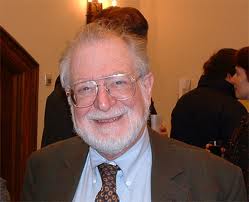
20 Jun TSRC: Open House & Tribute to Co-Founder
Don’t miss the tribute to Stephen Berry, co-founder of TSRC (Telluride Science Research Center) and chemistry professor at University of Chicago, given by a former PhD student of his, John Tully. There will be a slideshow of early pictures forming TSRC, an overview on the history and the accomplishments of Berry. Afterward, the public is invited to walk around the Elementary School where conferences are held and see what really goes on within the organization.
Telluride Science Research Center (TSRC) will host an Open House and tribute to co-founder Stephen Berry. The event takes place Tuesday, June 23, 6:00 p.m. in the Telluride Elementary School gym. As part of the tribute to Berry, John Tully, former PhD student of Berry’s at the University of Chicago and currently Sterling Professor of Chemistry at Yale, will talk about the history of TSRC and Berry’s contributions to science, TSRC, and Telluride. Admission is free.
Not only is science collaborative, but discussion, debate, and discovery are imperative to innovation and the progress of ideas in the field. And there’s nothing like Telluride’s San Juan Mountains as a backdrop to foster collaborative scientific discussion. The setting is intimate and anxiety free.
At least that’s what Berry, professor of chemistry at University of Chicago, and Peter Salamon, mathematics professor at San Diego State University, thought in 1984 when they founded TSRC.
Back then, TSRC included one workshop and 18 scientists in a small schoolroom, focusing on the theoretical science of finite-time thermodynamics. Today, more than 1,500 leading international scientists representing 100 different countries attend over 100 conferences on many aspects of molecular science during the summer months in our box canyon.
“Stephen and Peter brought the people here, they were excited about it, and they ran the meetings in such a way that everybody enjoyed them, more than enjoyed them, everyone exchanged ideas and made it a profitable and stimulating experience,” said Tully.
The conferences grew quickly into what it is now a non-profit organization with a full paid staff and advisory committee. Within this structure, TSRC provides a space for scientists to organize their own meetings—gatherings for which they choose the participants, topics, and schedule. Scientists attending the workshops and conferences make the important decisions about their time in Telluride, not the umbrella organization.
Telluride Science Research Center is different from other conferences around the world because the emphasis is on collaboration on unfinished work, something rare in professional gatherings.
“It’s forefront science,” said Tully. “People aren’t just presenting a paper like they might at the American Chemical Society where the work is all done. Here, they’re presenting ideas and unfinished work, discussing it with other experts who have different outlooks. Everybody profits from that kind of exchange.”
In 1984, Berry and Salamon wanted a place to build connections within the molecular science community, across all disciplines, where open communication between junior and senior scientists was commonplace. With the growth of TSRC in the past 30 years, that vision has not changed. In fact, the commitment to these ideals has only grown stronger as more scientists share and contribute in the same venue.
As Tully says, “My measure for whether a conference or workshop was successful is whether when I get back I have a new idea to work on, and it’s always true from Telluride.”
Come celebrate Berry and the Telluride Science Research Center at the Open House and find out what truly goes on here during the summer months.



Sorry, the comment form is closed at this time.